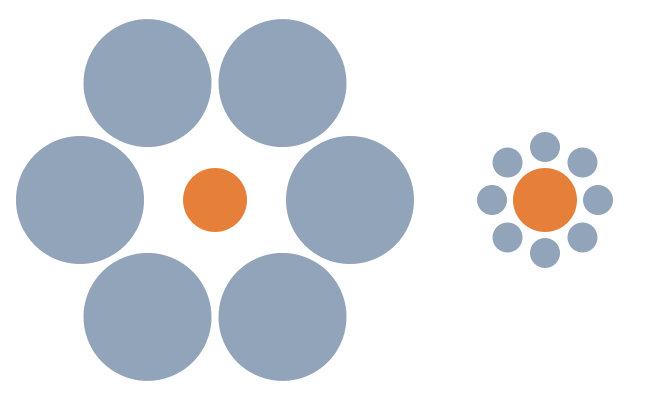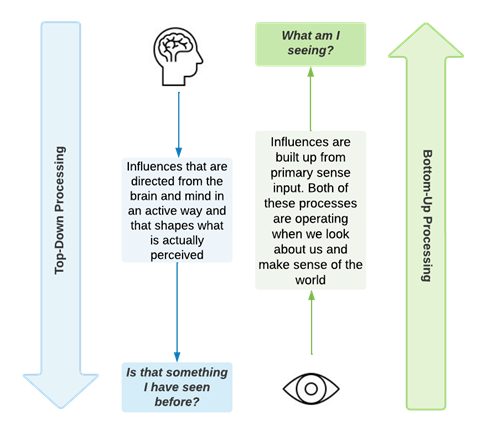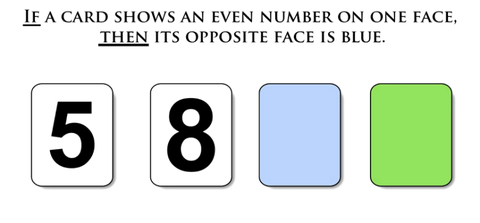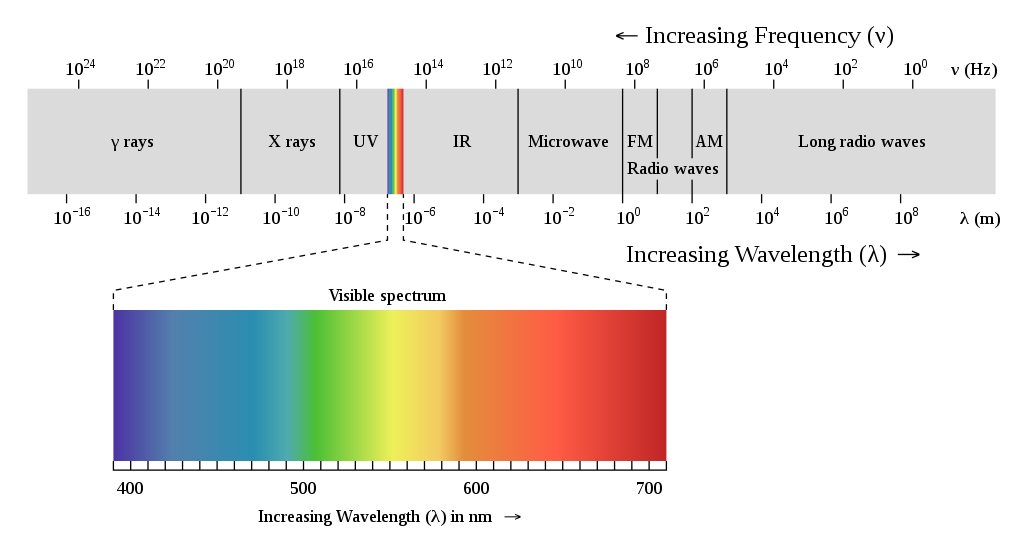4.2. Senses and Signals
By Michael Ireland, adapted by Marc Chao and Muhamad Alif Bin Ibrahim
The term “signal” often carries the implication of “information”. For example, when you pick up a radio or cellular signal, you are receiving meaningful data. In discussions about information, “signal” is frequently contrasted with “noise”, which refers to irrelevant or non-informative signals. Essentially, anything that conveys information we are interested in can be considered a signal. Conversely, randomness does not convey meaningful information, making it inherently noisy. This is because random processes, such as a coin toss, cannot be predicted or correlated with anything else, and therefore carry no meaning or useful information.
To illustrate this, imagine stargazing in search of a particular constellation. In this scenario, the signal is the specific light emitted by the stars you are trying to observe, while the noise is the light coming from other, irrelevant sources. Whether something is considered signal or noise depends on our goals and what we are trying to detect.
Our senses and brains are remarkably adept at detecting, filtering, and processing signals amidst noise. Much of this work occurs without conscious effort, allowing us to focus on what is most relevant. However, this process is not infallible. It is influenced by various biases, which can shape how we perceive and interpret signals.
The Sensory Apparatus: How We Detect Signals
An overview of how our body detects and processes signals provides a helpful foundation for understanding sensation and perception. Our sensory system includes a network of receptors designed to detect various signals. Some of these receptors are external, located on the surface of our bodies, such as our eyes, ears, nose, and mouth, which function similarly to the peripherals of a computer, like a mouse or keyboard. Others are internal, like pain receptors, which can be compared to a computer’s internal heat sensors. External receptors detect forms of incoming energy (light, sound, smell, taste), converting them into electrical signals that are transmitted to the brain. At this stage, the process of “sensation” occurs, though no conscious “perception” or experience has yet taken place.
Raw sensations, on their own, are often not very useful until the brain processes them. However, there are exceptions, such as the rapid “fight or flight” response triggered by the detection of threats. This automatic system bypasses conscious perception, producing immediate physical reactions to prepare the body for action. For instance, sensations can initiate bodily responses to danger, like increased heart rate or adrenaline release, even before we consciously feel fear. This recognition comes only after noticing our physical reaction.
While this explanation of “bottom-up” sensation and perception is widely accepted, it is somewhat oversimplified. It assumes that sensory signals are limited, clear-cut, and processed passively by the brain. In reality, neither assumption holds true. Our environment is saturated with countless signals, along with a significant amount of irrelevant noise. As the 19th-century psychologist William James famously observed, the world of a newborn is a “blooming, buzzing confusion”. This description applies to the flood of signals overwhelming our senses at any stage of life.
To make sense of this chaos, cognitive processes are necessary to guide the interpretation of sensory input in a “top-down” manner. For example, while a newborn’s cognitive faculties gradually develop to impose order on sensory input, an adult deprived of these top-down influences would experience the same overwhelming confusion. Thus, perception is not a passive reception of sensory data but an active process shaped by both incoming sensations and the brain’s interpretive mechanisms.
Our Senses in Bottom-Up and Top-Down Processing
Cognitive psychology and perception theories distinguish between two key processes: top-down and bottom-up. Top-down processing originates from the brain and mind, actively shaping what we perceive based on prior knowledge, expectations, and context. In contrast, bottom-up processing builds perceptions from raw sensory input, starting with the information gathered by our senses. Both processes work together as we interpret and understand the world around us.
Perceptual illusions occur because they exploit the dominance of top-down processing over bottom-up sensations, leading to perceptions that do not correspond to reality. For instance, in Figure 4.2.1 (known as ‘Ebbinghaus’ or ‘Titchener Circles’), top-down influences relying on context make it challenging to recognise that the two orange circles are actually the same size.

The distinction between top-down and bottom-up processes is a valuable framework for understanding how we perceive and interpret the world. Both processes are essential, as our perceptions result from a combination of bottom-up sensory input and top-down cognitive influences (refer to Figure 4.2.2).
The first role of our sensory perception system is to direct and discriminate incoming information. The influence of top-down processes on sensation should not be seen as a drawback; it is, in fact, essential. Without it, meaningful perception would be almost impossible. This aligns with William James’s idea of the “blooming buzzing confusion”, which describes an unfiltered sensory world. For instance, the vast number of photons striking the retina at any given moment would be overwhelming if our brains were not actively focusing on specific signals while filtering out others.
One example of the necessity of top-down processing is the cocktail party effect, which enables us to focus on a single voice in a noisy environment filled with competing sounds. The fact that we can filter out countless voices to concentrate on one person speaking is a remarkable feat of perception.
In this light, perception is best understood as a creative act. Our brain and mind do not passively receive raw sensory input; instead, they actively filter and transform it into meaningful perceptions. These perceptions may or may not accurately reflect reality. Importantly, the goal of our sensory systems is not to produce completely accurate representations of the world. Rather, they have evolved to create perceptions that enhance our survival. For the brain, survival value is a higher priority than accuracy, and this shapes the way we perceive and interpret the world around us.

An example of how top-down processing can go wrong occurs in certain mental illnesses. Many mental health conditions affect how we perceive the world around us. This is especially noticeable in psychotic disorders, where people experience delusions (false beliefs) and hallucinations (auditory or visual experiences that are not real). However, this phenomenon is also present in other mental health conditions, though less obvious. For example, individuals with anxiety disorders tend to have an increased sensitivity to and focus on signals they perceive as potentially threatening (Kindt & Van Den Hout, 2001). Additionally, these individuals often struggle to distinguish between neutral and genuinely threatening stimuli (Laufer et al., 2016). In these cases, the brain’s top-down processing actively shapes and alters primary sensory input, influencing how sensations are perceived.
These top-down influences are not limited to mental illness. Many other factors also affect how we perceive and interpret the world. One important group of influences aims to improve the speed and efficiency of our cognitive processing. These influences are called heuristics, which are mental shortcuts that help us quickly process information and make decisions.
Heuristics
Heuristics are strategies that serve as shortcuts for processing information and making decisions. They help simplify complex tasks by acting as “rules of thumb”, enabling us to quickly perceive and interpret information while reducing the mental effort or resources required. However, heuristics come with a significant drawback: they are prone to errors. These shortcuts often aim for “good enough” results rather than perfectly accurate or optimal outcomes. As a result, while heuristics save time and mental energy, they can also lead to biases and mistakes.
One example of a heuristic is the fight-or-flight response, which enhances survival by triggering a rapid physiological reaction to perceived threats. This response can protect us in dangerous situations, but it can also lead to false alarms, such as reacting to a coiled hose as if it were a snake. Another example of heuristics in action occurs when we instinctively pay closer attention to our valuables around someone who fits a stereotypical profile, such as a person with dreadlocks, shabby clothes, or face tattoos. This snap judgement is based on a heuristic that may associate outward appearance with criminality, even though such features are unrelated to a person’s behaviour. Reflecting more critically might lead us to realise the flaw in this automatic assumption.
For further reading and examples of heuristics, the Verywell Mind website offers additional insights and resources.
If you are unsure about how much you rely on heuristics in your daily thinking, consider the following problems. Most people answer these incorrectly due to heuristic-based thinking. While the questions themselves are not particularly difficult, your reliance on heuristics can make it easy to overlook the correct answers. Once you see the solutions, you might find yourself thinking, “How did I miss that?”
Here is a final example: a logic puzzle created by Peter Cathcart Wason in 1966. In this puzzle, you are presented with four cards, each with a number on one side and a colour on the other.
The rules are as follows:
- The numbers can be either odd or even.
- The colours can be either blue or green.
- The claim to test is: “If a card shows an even number on one face, then its opposite face is blue.”
Your task is to determine which two cards need to be flipped over to test this claim properly.

A helpful tip is that if you got it wrong, you were likely focusing on confirming the statement rather than attempting to falsify it.
We would not want to completely eliminate heuristics from our lives, as they are essential for managing the overwhelming amount of cognitive processing and decision-making we face each day. However, to use heuristics effectively, we must understand their influence on our thinking. Heuristics can be thought of as mental shortcuts that “bias” us toward interpreting and understanding things in specific ways. While the term bias often has a negative connotation, in this context, it simply refers to a tendency to process information in a certain way, which can be either positive or negative.
Biases have evolved because they provide significant benefits. For example, overreacting to a coiled hose (mistaking it for a snake) has clear survival value. However, some biases can be harmful. These are the ones that distort our thinking, skew our judgement, and lead us away from the truth. When people refer to “bias”, they are usually talking about this negative type.
A common example of a heuristic is a stereotype, which allows us to make quick, though often biased, judgements about someone. While stereotypes may have had evolutionary advantages for survival, they often lead to unfair or inaccurate assumptions.
In critical thinking, our primary concern is with heuristics that we call cognitive biases. These are systematic patterns of biased thinking, and in many cases, the terms “heuristics” and “cognitive biases” can be used interchangeably. As we explore this further, you will see how these concepts shape our perceptions and decisions.
Signal Detection & Transformation
As mentioned earlier, our bodies have many sense organs that detect inputs both from inside and outside. These include the five basic senses most people are familiar with: sight (vision), hearing (audition), smell (olfaction), taste (gustation), and touch (somatosensation). However, we actually possess far more than just these five senses, and some scientists suggest we may have as many as 20.
Among these additional senses are ones we use daily without much thought. For instance, proprioception allows us to sense the position of our body parts without looking at them (you can test this by closing your eyes and touching your nose). Similarly, equilibrioception (sense of balance) and thermoception (sense of temperature) are essential but often taken for granted. Other senses include chronoception (sense of time passing) and kinaesthesia (sense of movement).
You might wonder: What does this have to do with critical thinking? The point is that all of these senses are imperfect tools, sensitive to specific types of input but prone to errors. Understanding the limitations and vulnerabilities of our sensory systems is key to developing the right mindset for critical thinking. This includes cultivating humility about our beliefs and maintaining vigilance to account for how these limitations influence how we form and revise our views.
The impressions our senses register provide raw data, but it is our brains that do the heavy lifting, such as filtering, interpreting, and transforming this input into our picture of the world. Importantly, science has shown that this sensory representation is neither complete nor entirely accurate. Our senses are bombarded with billions of signals, and without the brain filtering and organising this data, we would be overwhelmed and unable to function. These filters are essential for making sense of the world. Without them, we would perceive everything as chaotic and incomprehensible, much like staring at those old Magic Eye pictures (also called stereograms or autostereograms) until a clear image emerges.
For instance, Figure 4.2.4 contains a hidden image of the African continent on a globe. I placed it in the image myself using a fun website that creates stereograms. See if you can find it.

Almost all our senses function by transforming physical interactions with the external world into electrical signals that the brain can process and interpret. These interactions include air vibrations striking the eardrum or photons hitting the retina in the eye. Since the brain operates almost entirely through electrical signals, it relies on this transformation to create our perceptions. Interestingly, these electrical signals are very different from what we ultimately experience. Our perceptions are not raw representations of the sensory data but are transformed into richer, more meaningful experiences by the brain.
For example, light is nothing more than electromagnetic radiation composed of vibrating energy packets called photons. These photons vibrate at different wavelengths, and the retina in our eyes reacts to these variations, giving us the experience of sight and colour. Similarly, sound is the brain’s interpretation of air vibrations that hit the eardrum. Variations in the wavelengths of these vibrations result in the differences in pitch that we perceive. This explains why space is completely silent, as without air, there are no vibrations for our ears to detect, and sound cannot exist. As a result, the world outside of our sensory systems and the brain’s creative processing is inherently silent and colourless. Much of what we experience, such as colour and sound, is a product of top-down processing. Ironically, the most accurate depiction of reality might be the old black-and-white silent films. This insight highlights how remarkably creative our brain is in constructing a vibrant, colourful, and sound-filled world.
Our minds curate sensory information much like a museum curator organises exhibits to tell a cohesive story. This can be observed in how psychological states influence perception. For example, when we are under stress, our sensory and perceptual systems shift focus to prioritise specific signals. A recent study even found that stress impairs our ability to visually distinguish scenes (Paul et al., 2016). This phenomenon has inspired numerous social media videos showcasing amusing pranks that take advantage of altered perceptions under stress.
In addition to the brain’s top-down creative input, it is worth noting that our sensory organs are only sensitive to a narrow range of signals. For instance, Figure 4.2.5 illustrates the tiny fraction of the electromagnetic spectrum that our eyes can detect, which is less than a ten trillionth of all light waves. Similarly, our hearing is limited to a small range of frequencies, from 20 Hz to 20 kHz. Air vibrates at countless frequencies, yet our ears and brains only respond to a narrow slice of this spectrum. This means the world is flooded with information and signals we are ordinarily unaware of.
Fortunately, humans have developed powerful instruments to extend our sensory capabilities, enabling us to detect more of this hidden information. However, these tools come with their own unique challenges and limitations in perception, which we will not delve into here.

This discussion highlights key points a critical thinker should consider when understanding the basic processes of sensation and perception. One important fact to keep in mind is that these processes do not work the same way for everyone. People often have different experiences of the exact same thing. A striking example of this occurred in 2015 with the viral social media phenomenon #TheDress. This image revealed significant differences in colour perception among individuals. Some viewers saw the dress as blue and black, while others perceived it as white and gold, and even now, scientists are not entirely sure why. One theory suggests that our eyes adapt to different types of lighting depending on our lifestyle. For instance, people who are night owls might be more accustomed to dim, cool lighting and see the dress as blue and black, while early birds, accustomed to brighter, warmer lighting, may perceive it as white and gold.
This phenomenon illustrates that there are more individual differences in how our perceptual systems function than we might have previously realised. It can be unsettling to recognise that two people with perfectly functioning vision can look at the same object and see entirely different things.
Given these insights, the old saying “Seeing is believing” becomes far less certain. This should prompt us to approach what we perceive with modesty and acknowledge the limitations and fallibility of our sense organs in shaping our beliefs about the world. Recognising the vulnerabilities of our sensory systems is the first step toward becoming a more critical consumer of sensory input. Understanding that we rarely see the whole picture, and often do not even see an accurate one, can help counter overconfidence in our perceptions.
Moreover, being aware of individual differences in sensory and perceptual processes enables us to better understand others. This awareness fosters empathy and helps us appreciate differing beliefs and worldviews. By acknowledging these variations, we become better equipped to navigate contrasting perspectives. Finally, these issues underscore the importance of cultivating the attitudes discussed in the previous chapters, particularly scepticism and open-mindedness when it comes to our sense perceptions.
References
Kindt, M., Van Den Hout, M. (2001). Selective attention and anxiety: A perspective on developmental issues and the causal status. Journal of Psychopathology and Behavioral Assessment 23, 193–202. https://doi.org/10.1023/A:1010921405496
Laufer, O., Israeli, D., Paz, R. (2016). Behavioral and neural mechanisms of overgeneralization in anxiety. Current Biology, 26(10), 713-722. https://www.cell.com/current-biology/fulltext/S0960-9822(16)00073-7
Paul, M., Lech, R. K., Scheil, J., Dierolf, A. M., Suchan, B., & Wolf, O. T. (2016). Acute stress influences the discrimination of complex scenes and complex faces in young healthy men. Psychoneuroendocrinology, 66, 125–129. https://doi.org/10.1016/j.psyneuen.2016.01.007
Chapter Attribution
Content adapted, with editorial changes, from:
Mastering thinking: Reasoning, psychology, and scientific methods (2024) by Michael Ireland, University of Southern Queensland, is used under a CC BY-SA licence.

